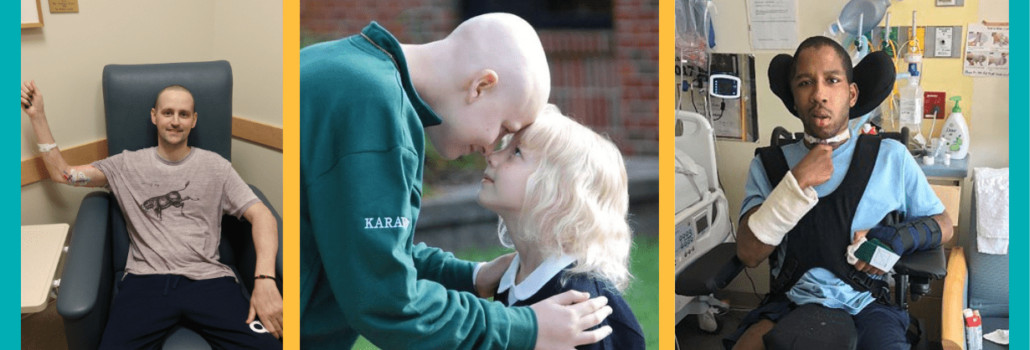
MobilityWorks
Accessibility for all: Helping people connect with who and what matters most
Searching...
No results found. Please try modifying your search.
If you’re seeking financial help for brain tumor patients, trust Help Hope Live for fundraising.
Finding financial help for brain tumor patients can be a stressful process. Fundraising for brain tumor surgery is one way patients and families can ease the financial burden of medical expenses.
Brain tumor removal surgery costs can vary significantly for patients and may not be fully covered by health insurance. For example, if the patient is living with a small benign tumor in an accessible location, the cost could be $50,000 before insurance. If the tumor is malignant and needs to be treated with surgery and chemotherapy or radiation therapy, the costs can quickly rise to $700,000 before insurance.
Although brain tumors sometimes require similar treatments as a brain cancer diagnosis, like chemotherapy or radiation therapy, total costs will differ greatly based on the severity and disease type. Brain cancer often requires additional repetitive treatments, but brain tumors tend to require fewer rounds of treatments than brain cancer: most of the time, brain tumors only require one invasive surgery.
The simple answer is yes: there is a distinct difference between a brain tumor and brain cancer. While all brain cancers are typically classified as tumors by medical professionals, this doesn’t mean all brain tumors are cancerous. Brain tumors can be either malignant or benign. However, because of their location, any tumor that develops in the brain can pose a dangerous health risk.
Early-stage brain tumors may present as many different medical conditions because they can affect the brain in many ways depending on their location. Common symptoms include:
Multiple factors will affect the symptoms a brain tumor patient may experience. For example, a patient may not experience any symptoms at all while living with a common tumor called a meningioma, which frequently grows so slowly that it can be present for a long time while remaining undetected.
The location, size, and growth speed of any tumor will contribute to a dramatic fluctuation in a patient’s symptoms.
The most common ways doctors diagnose a brain tumor are through a neurological exam, brain scans, and a biopsy. A neurological exam is typically several tests that evaluate the functions of a patient’s brain, i.e., hearing, vision, balance, and reflexes. Brain scans used to diagnose brain tumors include CT (or CAT) scan, MRI, and possibly X-rays or angiograms to identify the tumor and its location and measure brain function.
A biopsy can assess the type of brain tumor that the patient may be experiencing–but only if the biopsy can be performed safely. This biopsy will assess the tissue of the tumor to determine the type of cancer that the patient is experiencing.
Surgery is the most common brain tumor treatment. In fact, for some tumors, surgery may be the only procedure necessary to remove the tumor. According to Johns Hopkins: “Surgical approaches to brain tumor removal include craniotomy, neuroendoscopy, laser ablation and laser interstitial thermal therapy.”
Other options for brain tumor treatments include chemotherapy and radiation therapy.
Brain tumor surgery cost, medical expenses associated with brain tumor procedures, rehabilitation funding for surgery, and long-term health care costs will vary depending on the situation. However, regardless of the specifics, the expenses can add up quickly for patients and their families.
Help Hope Live is your community-based fundraising source to assist with the unmet medical expenses and related costs that can result from living with a brain tumor.
Health insurance premiums, deductibles, and co-payments
Through community-based fundraising, our nonprofit organization is dedicated to helping you raise funds for the medical expenses associated with surgery or ongoing support for a brain tumor.
The fundraising process with our nonprofit starts with a few simple steps:
Help Hope Live differs from GoFundMe by:
We are a nonprofit organization with more than 4 decades of fundraising experience and a 4-star Charity Navigator rating.
Here are a few Help Hope Live fundraising success stories:

Mom of three Carmel Longoria was diagnosed with out-of-remission cancer in 2020. Unable to return to work and facing out-of-pocket costs such as chemotherapy and medical-related travel, Carmel and her loved ones turned to Help Hope Live. They raised over $12,800 in just seven months. Carmel received several life-changing cancer-related transplants in 2021.
Patrick “PJ” Kent was diagnosed with acute lymphocytic leukemia at 28 years old. He and his family began fundraising for extensive cancer-related out-of-pocket costs, particularly specialized cancer treatments, inpatient care, and hospitalizations.
Ethan Kadish is living with a severe traumatic brain injury following a lightning strike. Costs associated with his diagnosis top $1 million per year with only limited help from insurance. Help Hope Live is a critical financial lifeline for “Team Ethan” with personalized fundraising help at every stage of their journey.
If you choose to fundraise with our nonprofit, here’s how the process will look:
1. APPLY for assistance
2. YOU’LL BE PAIRED with a Client Services Coordinator
3. YOUR COORDINATOR will provide you with one-on-one fundraising help, including personalized fundraising materials and guidance on how to rally your community, share your story on social media, reach out to the press, plan in-person or virtual fundraising events, and more.
Need Other Financial Help Options?
For alternatives to fundraising, you can find information on a variety of cancer financial assistance options. Please view our Illness Resource Directory for insight into sources of direct financial aid, support groups, and other resources for cancer patients and their families.